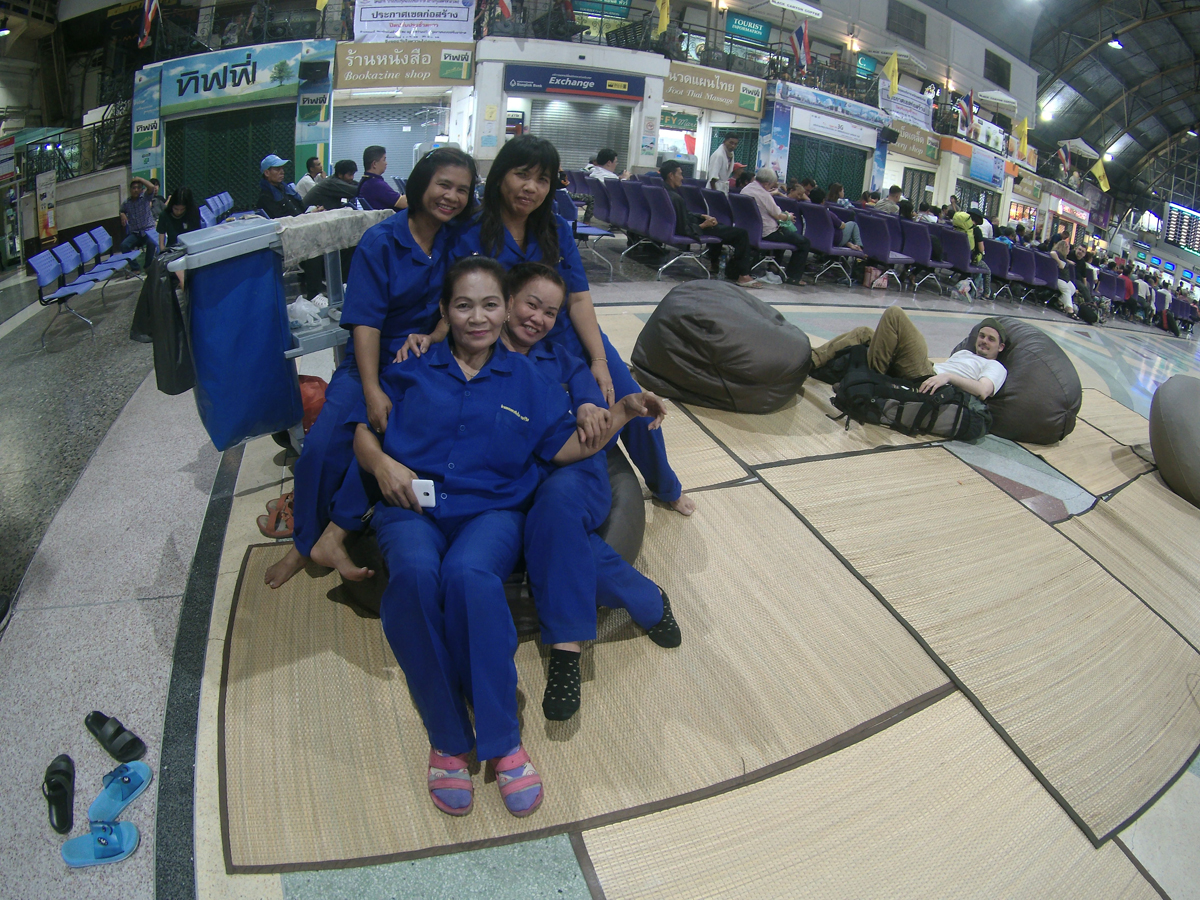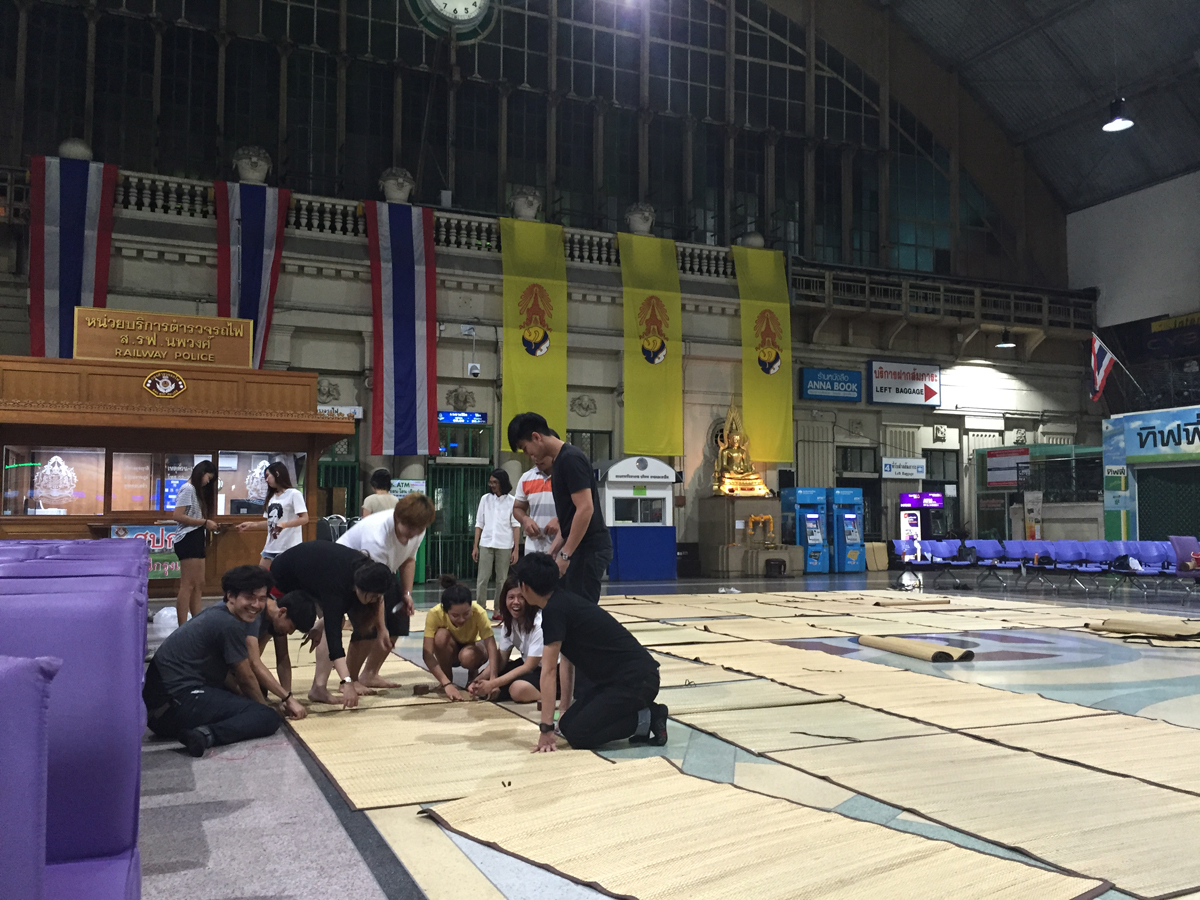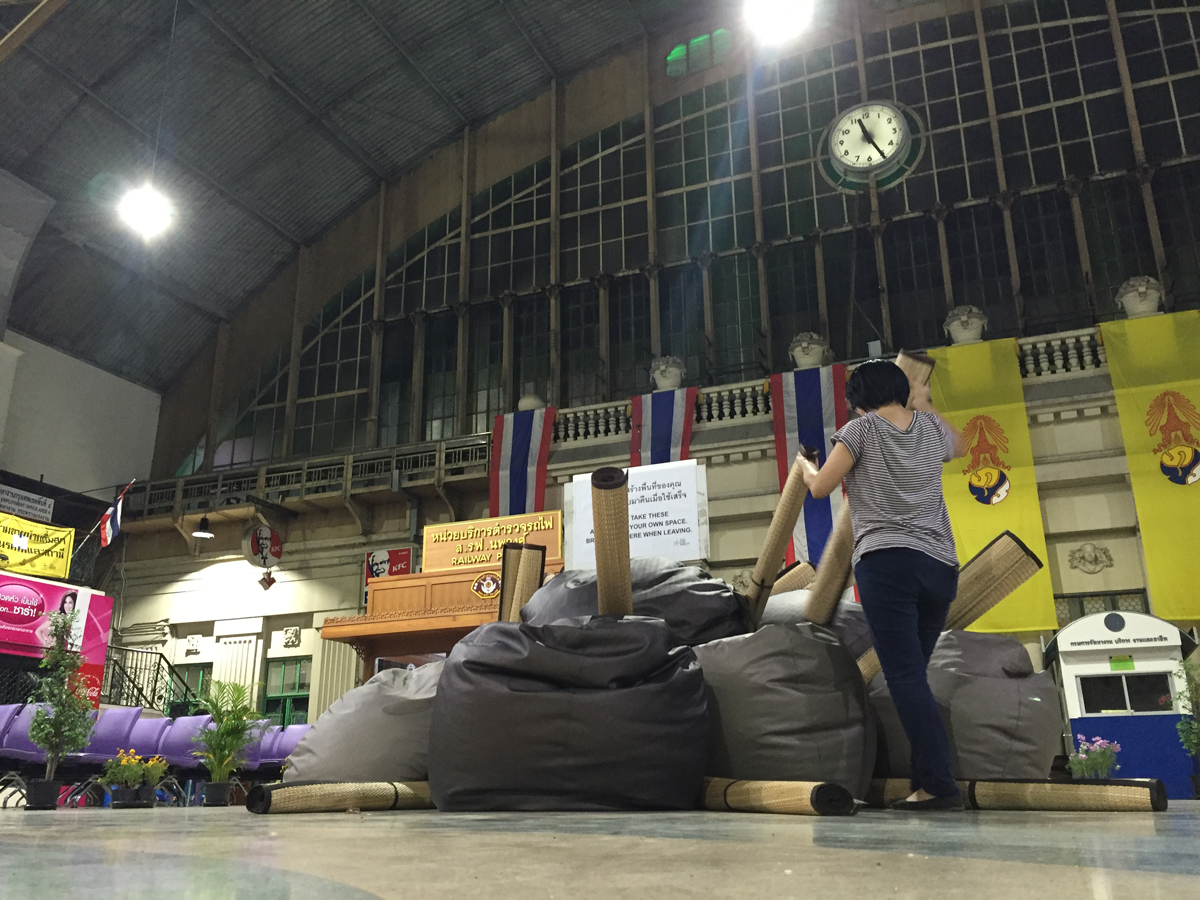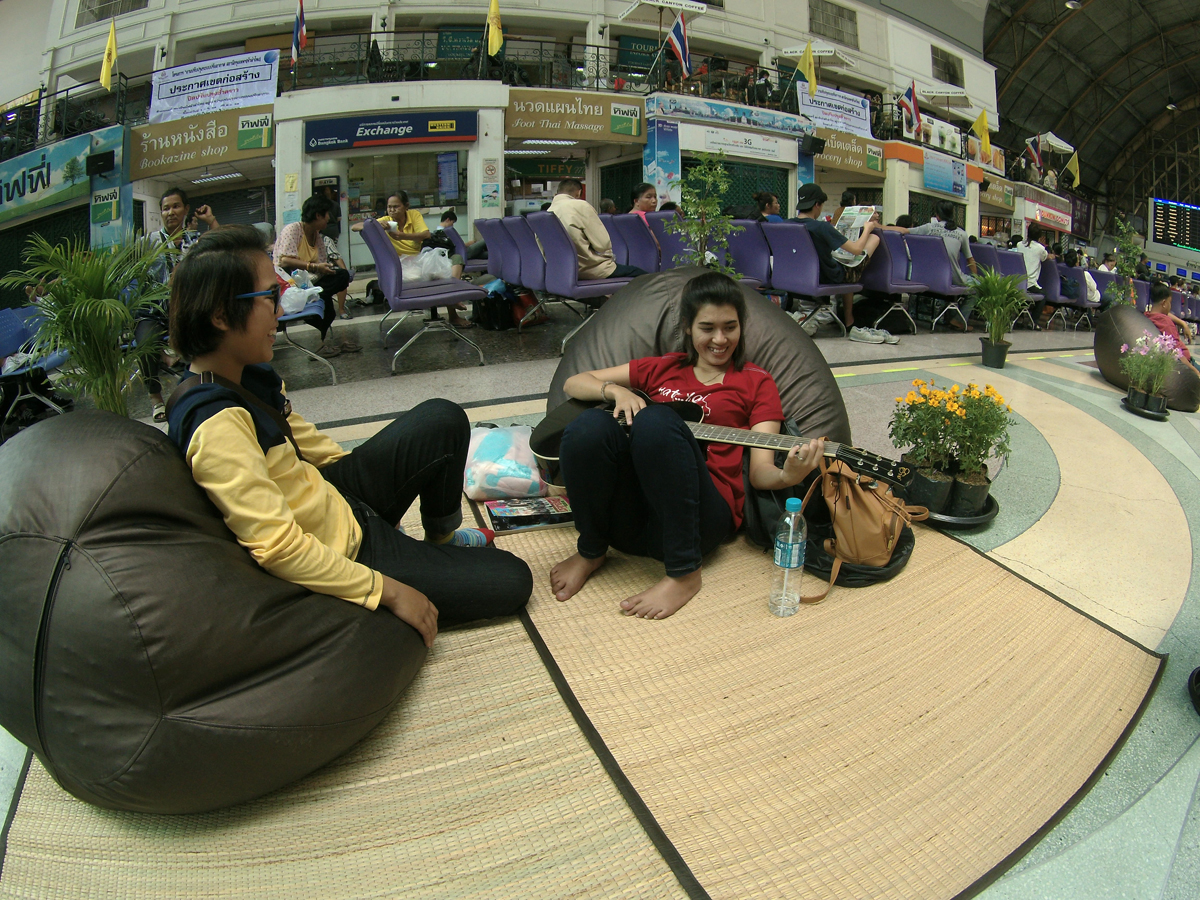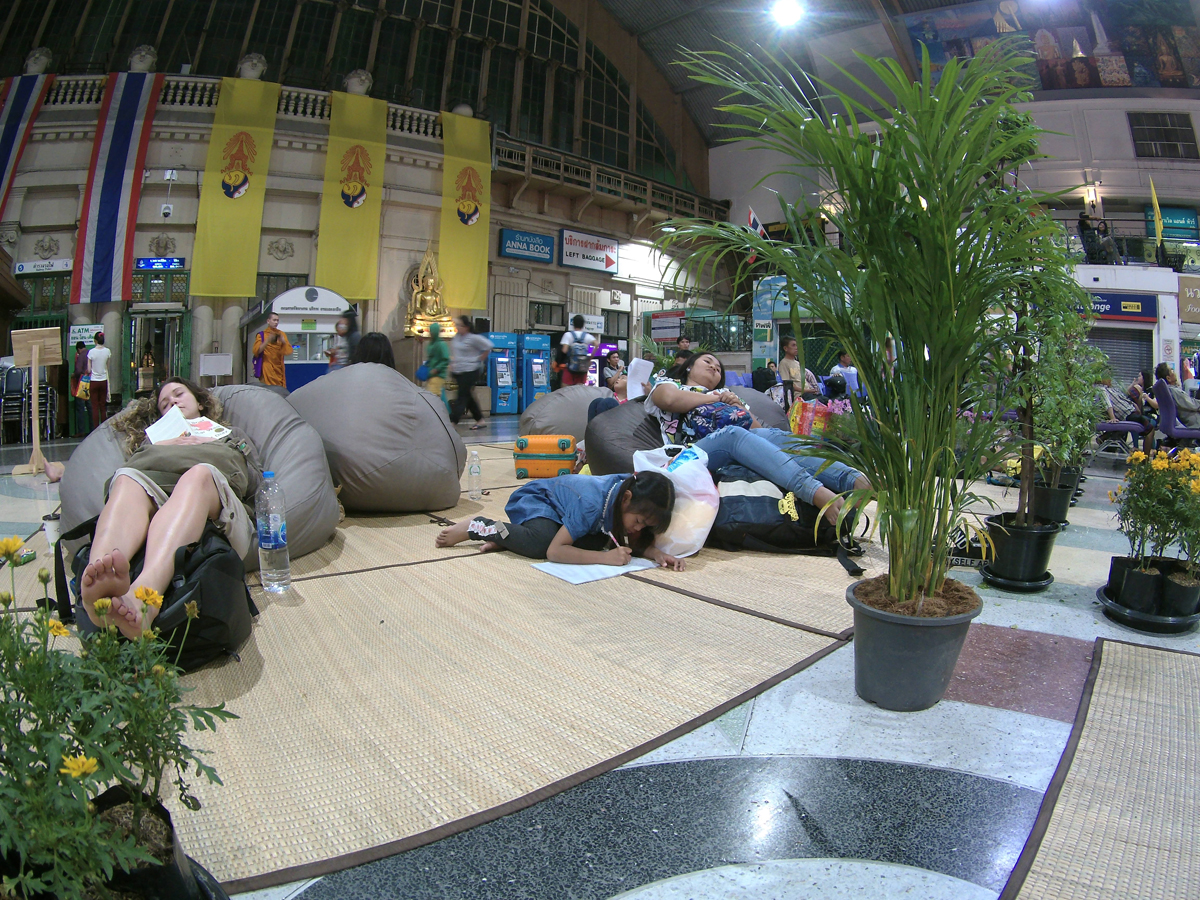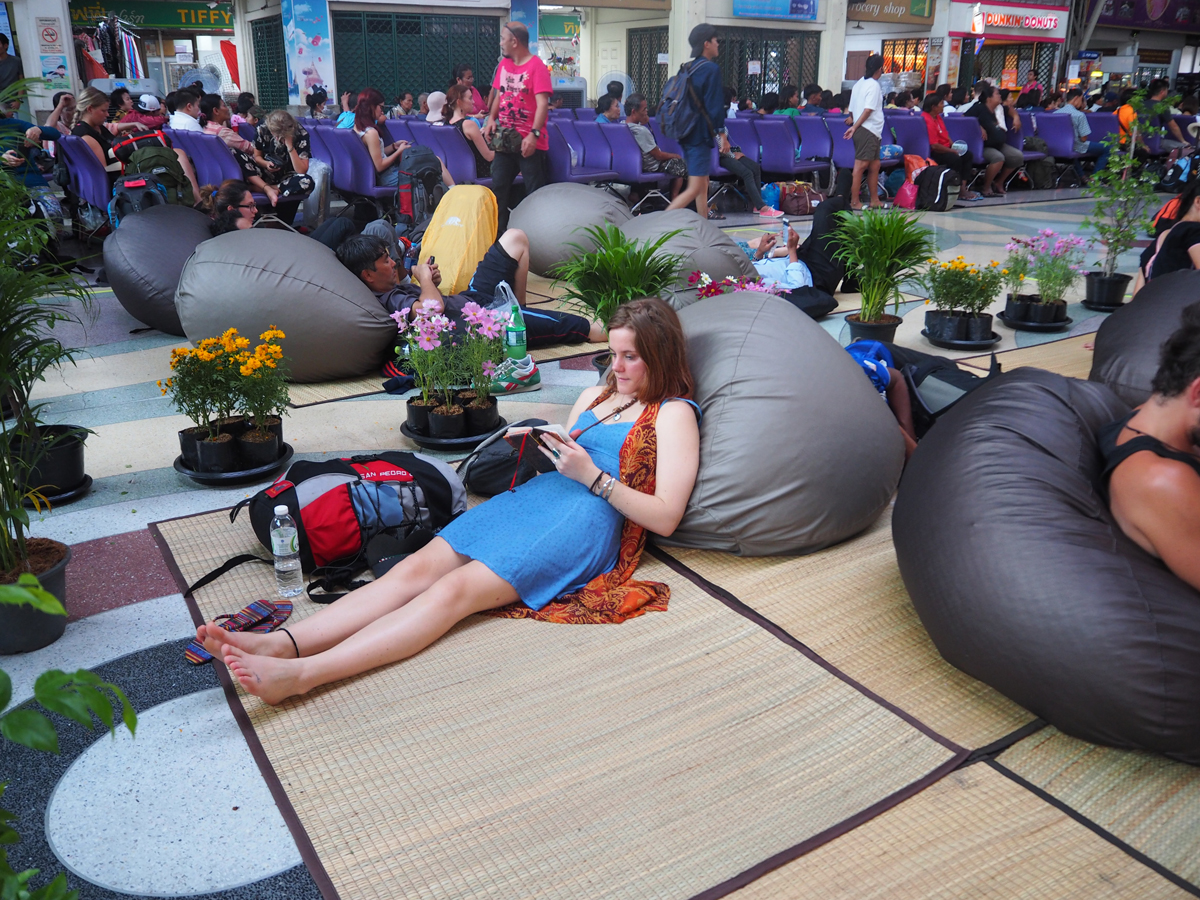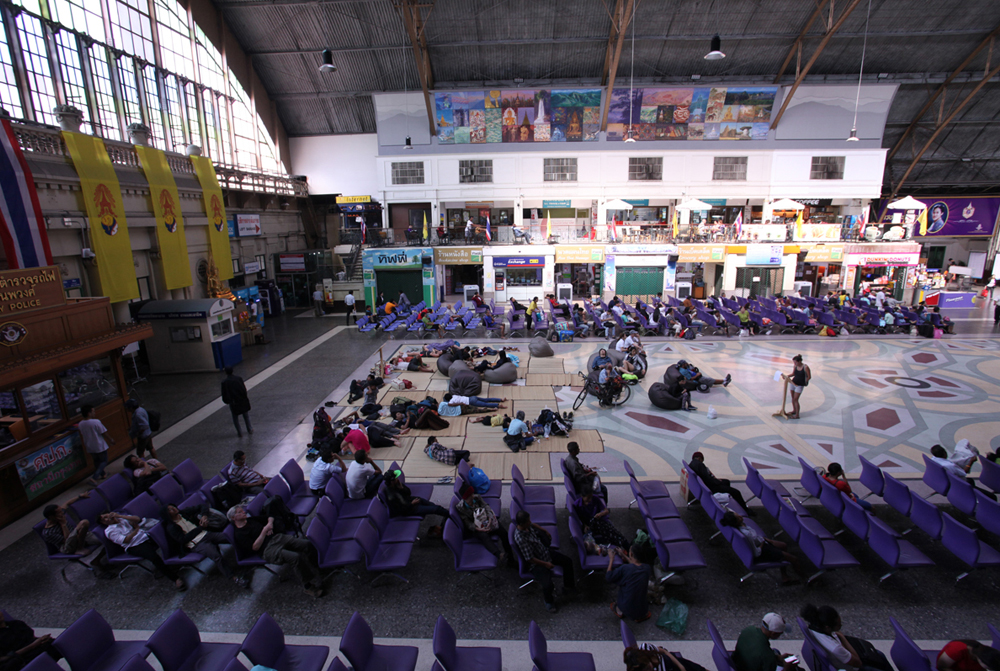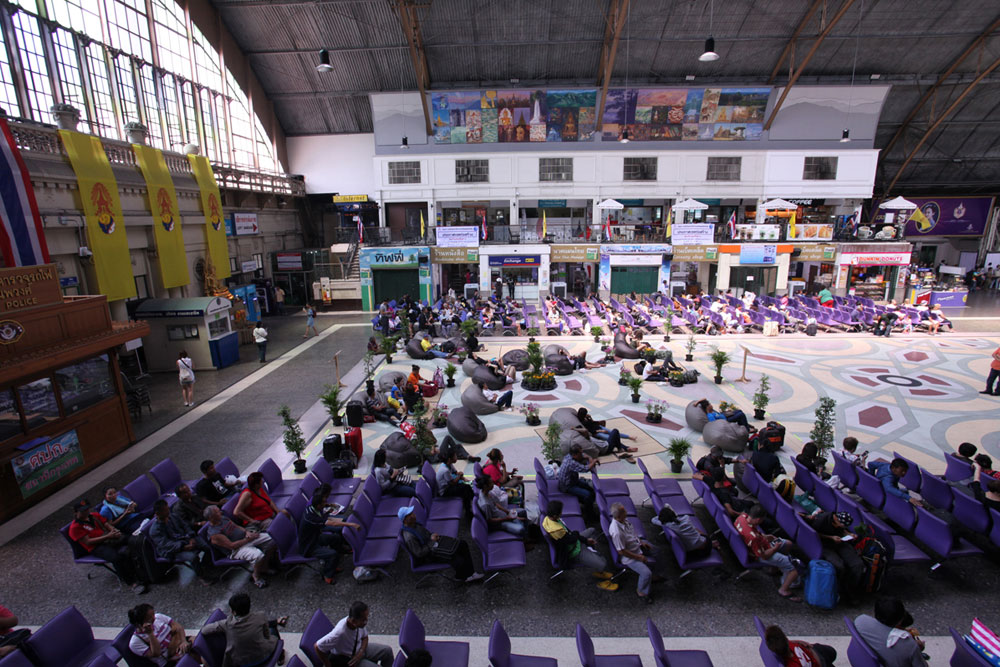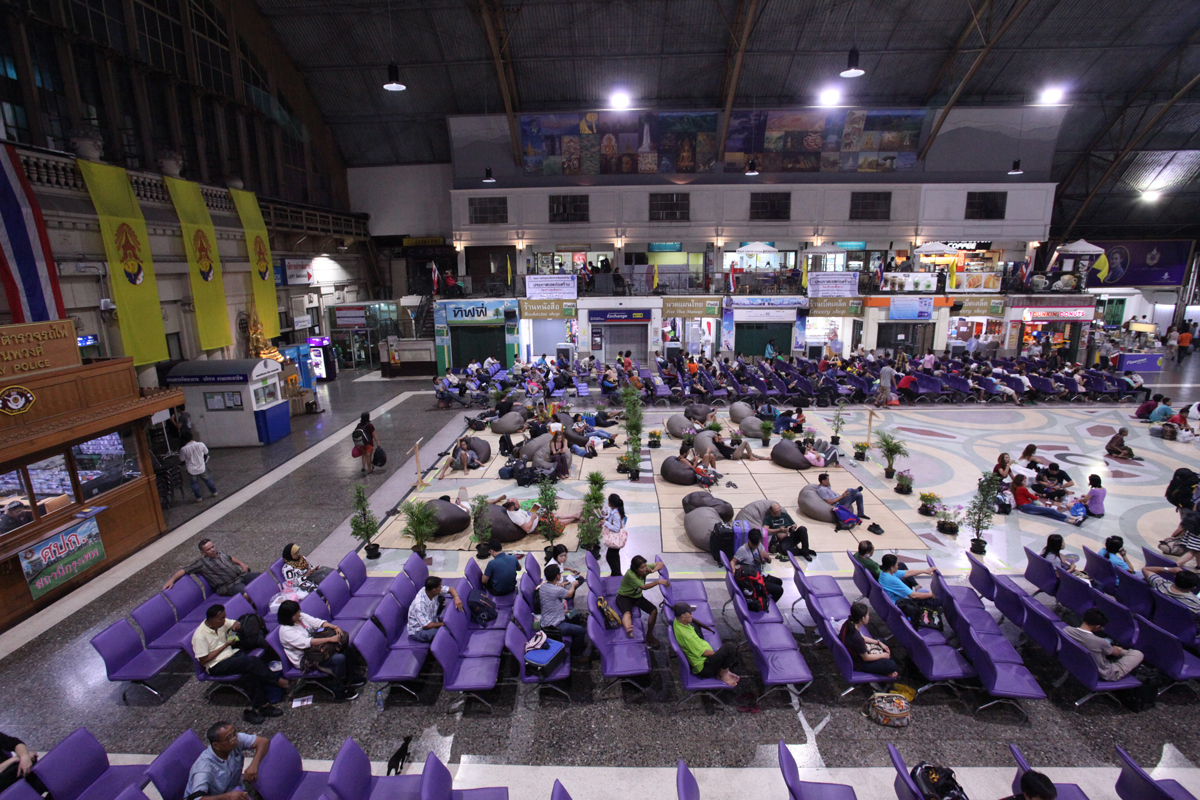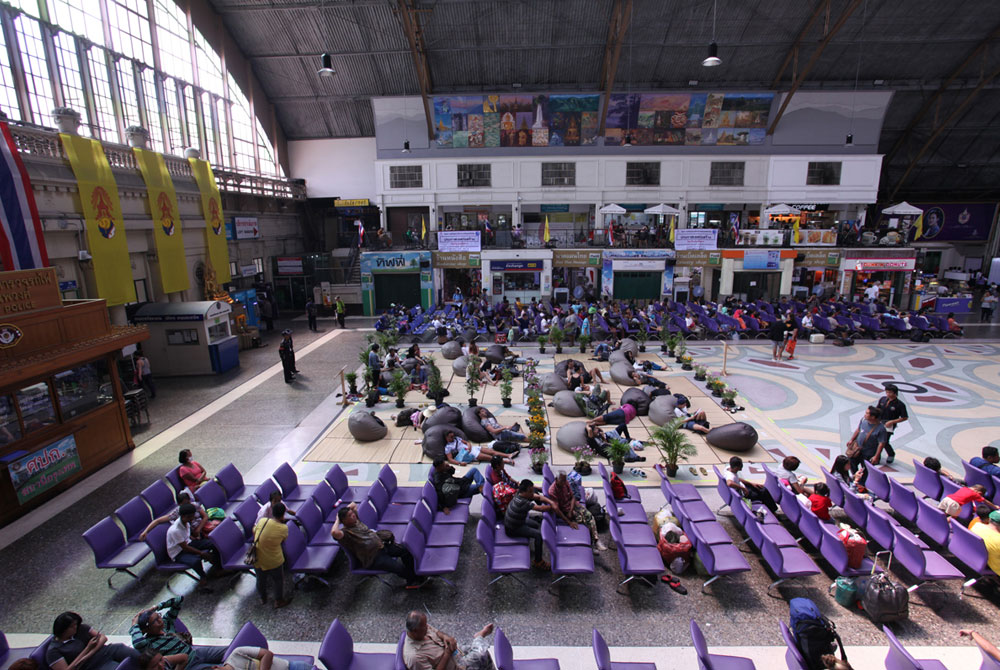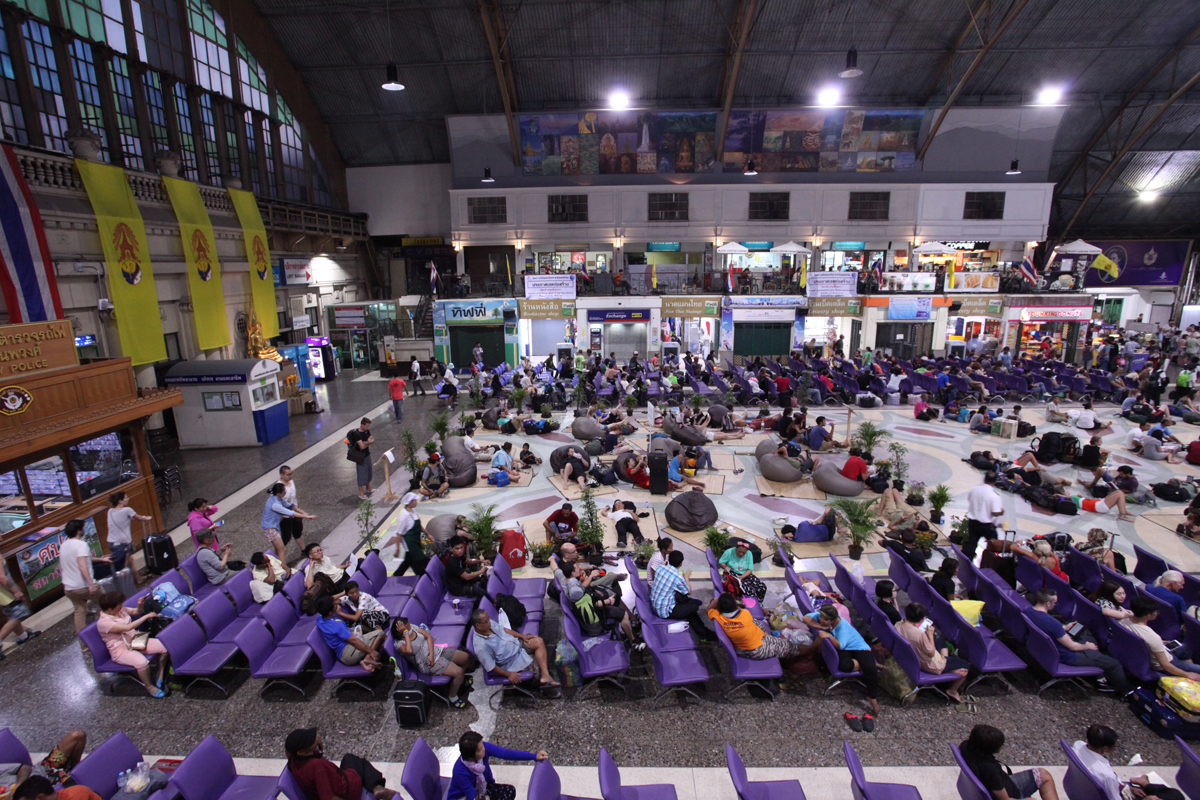AT TIMES THE FACILITATION OF PUBLIC DIALOGUE REQUIRES ONLY THE RIGHT SPACE.
Aimed at providing a platform for architects to utilize their creative ideas to benefit the public and society, the ‘ASA-CAN 10 for 90’ workshop comprised of architectural mentors from Integrated Field (IF) and CloudFloor as well as a team from Young Community Architects Network (Young CAN) recently took on one of Bangkok’s most intriguing and diverse public spaces as setting for its task at hand to transform a public space into an “interaction space,” where everyone can “enjoy sharing a collective existence.”
The project was conducted in cooperation with the State Railway of Thailand who permitted the use of the 144-square-meter waiting concourse at Hua Lumphong train station in Bangkok for exploring and experimenting with design interventions.
The workshop participants found that the provided rows of purple chairs in the waiting concourse were rather formal in nature, and did not respond well to the needs of those who had to wait a long time for their train, or groups who would like to sit together. The team therefore aimed to create a ‘medium’ that could break up the formality and encourage different and diverse users to share the space.
Traditional Thai mats were called upon to reinterpret the use of space in a country style while beanbags were selected to represent more of an urban solution. Potted plants were further put to use to create clear boundaries as well as create an even more pleasant and inviting atmosphere for sitting.
The results of the installation showed that the use of mats increased the fluidity of the utilization of the space as they were used very autonomously and flexibly, and people felt relaxed and friendly. Users were not tense about sitting or lying down on the floor and many people chose to lie down and sit comfortably in a circle. Activities on the mats included sitting, reclining, sleeping, playing cards or chess and making handicrafts, as well as doing yoga and stretching. People chose to rest on the beanbags in a more isolated manner, with the potted plants creating clear boundaries for the use of space as most people liked to lie down with their back against a row of pots.
In conclusion, from standard chairs to mat and beanbag, what was realized is that, ultimately, public space should be a space where people can meet and have a dialogue and, furthermore, that dialogue need not even be realized through speaking. A free society is not one where everyone necessarily agrees, nor one where conversations or interaction take place all the time. It is possible to recognize the existence of others who may have the same or different views from us, by simply deciding to sit still together – and this should be one of the purposes of design in a public area.
